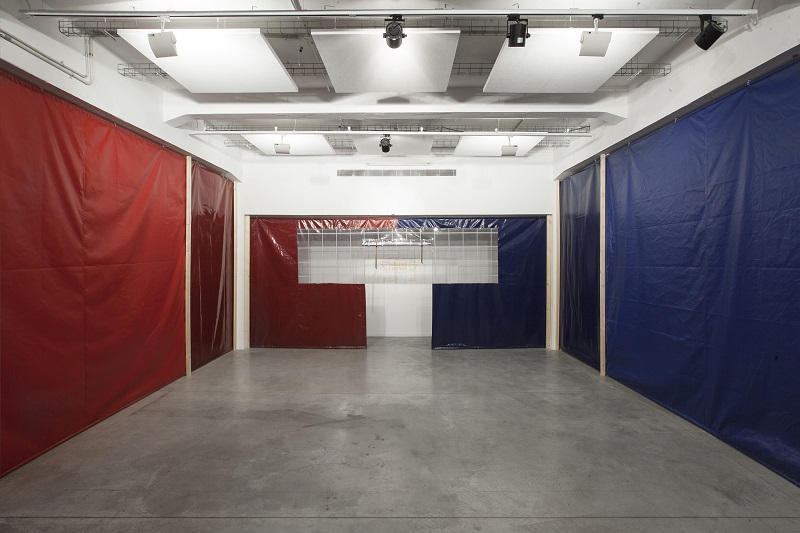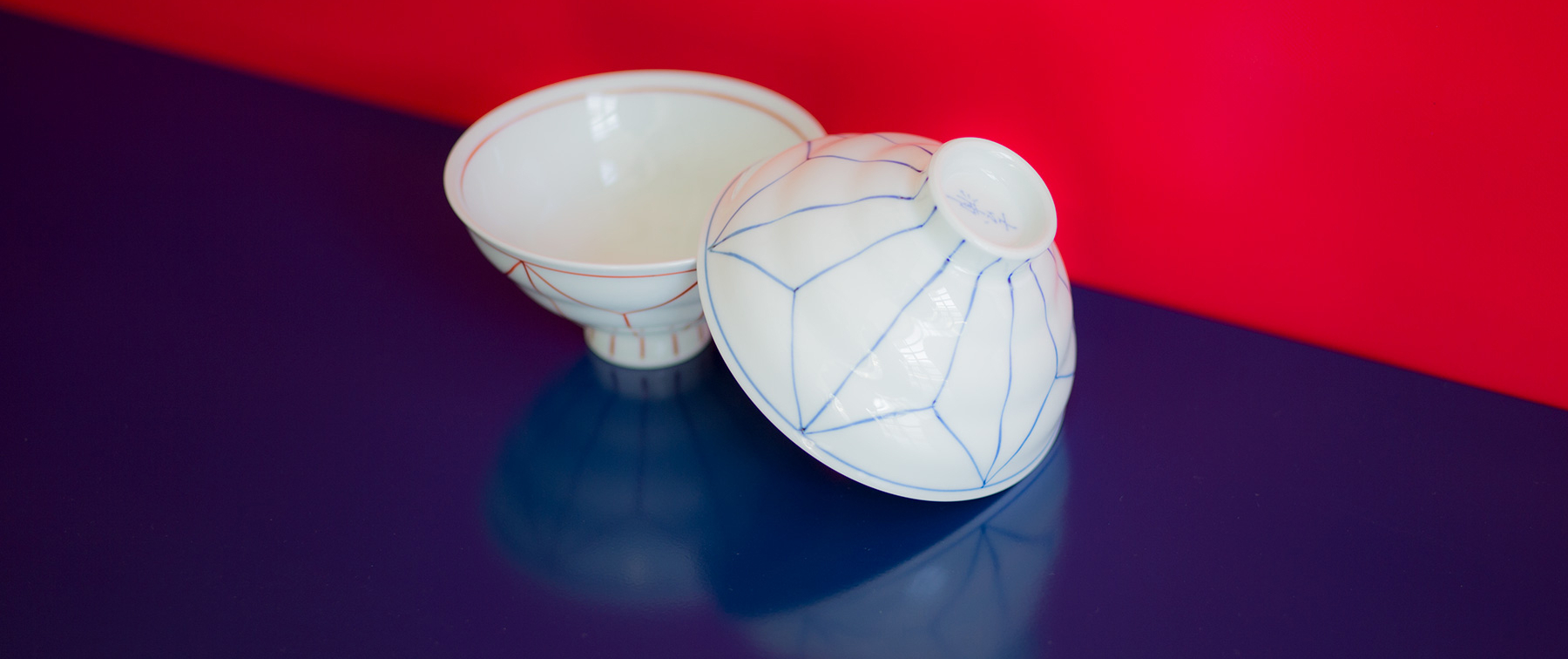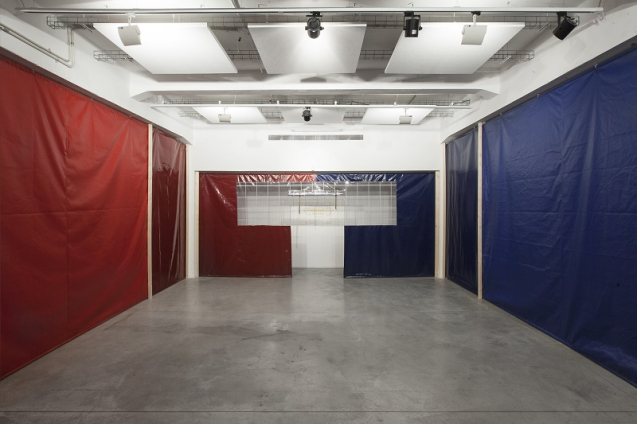The exhibition Golden Hands is the outcome of a year of mutual work between David Adika and Hilla Toony Navok at Artport Tel Aviv, resulting in ideas on aesthetics, space, design and kitsch that developed into collaboration, where each side supports the other, disrupts his work and surprises him.
—
A conversation between Vardit Gross, Hilla Toony Navok and David Adika
The exhibition Golden Hands is the outcome of a year of mutual work between David Adika and Hilla Toony Navok at Artport Tel Aviv, resulting in ideas on aesthetics, space, design and kitsch that developed into collaboration, where each side supports the other, disrupts his work and surprises him.
David: In a quick glance, our works don’t seem that related. During our residency at Artport we discovered that we are interested in similar things – we both wander a lot before exhibitions, we are both extremely passionate about architecture, design, art and what lies between them. If I usually explore the areas of kitsch, display windows, Israeli home interiors and what can be found on their shelves, I believe that Toony is more attracted to home decor shops, furniture and the aesthetics of the Israeli home, mainly that of the periphery. Our artistic action is mostly of transformation – working with what is perceived as banal, peripheral and its decoration with feathers.
Toony: From my point of view, dealing with the everyday has to do with the abstract. I try to find traces and leftovers of abstract “high-class” aesthetics in my everyday surroundings.
David: When we realized we wanted to do something together, we searched for a place that interests us both and that will stimulate us; we thought of Japan in general and Tokyo in particular. Tokyo interested us as a city that, on one hand is filled with great chaos, though inside, things go about in perfect order and cleanliness. Precise and minimalistic aesthetics aside visual noise and redundancy. This physical journey you make in Japan – from the temple of electronics to the temple of Zen – is the type of journey we both try to achieve in our work, using the “cheap” as raw material and as a drive towards a rich aesthetic and spiritual experience.
Vardit: You chose the two colors that dominate the exhibition, blue and red, inspired by an Ikebana battle you witnessed as viewers: a battle in which two masters of flower arrangement compete in front of an audience. The audience votes for the arrangements according to the masters’ assigned colors, red...
Read More 

